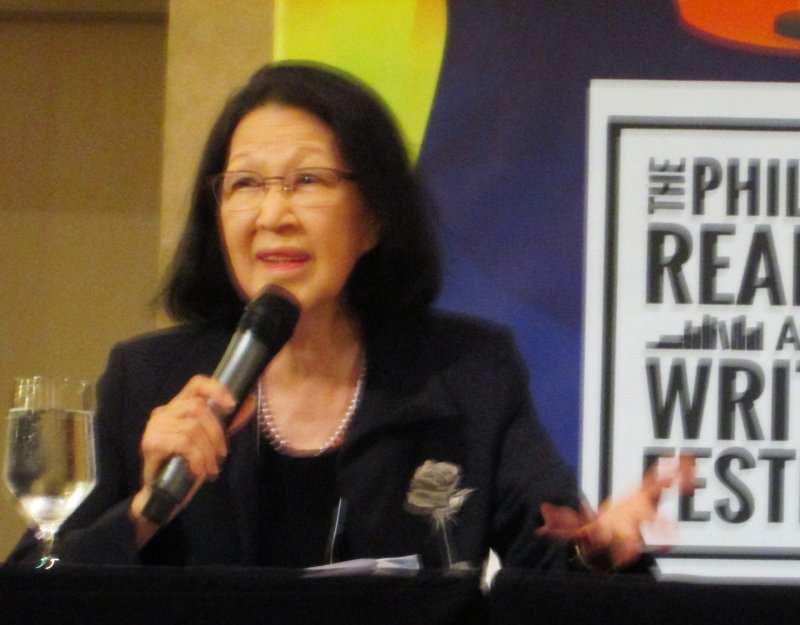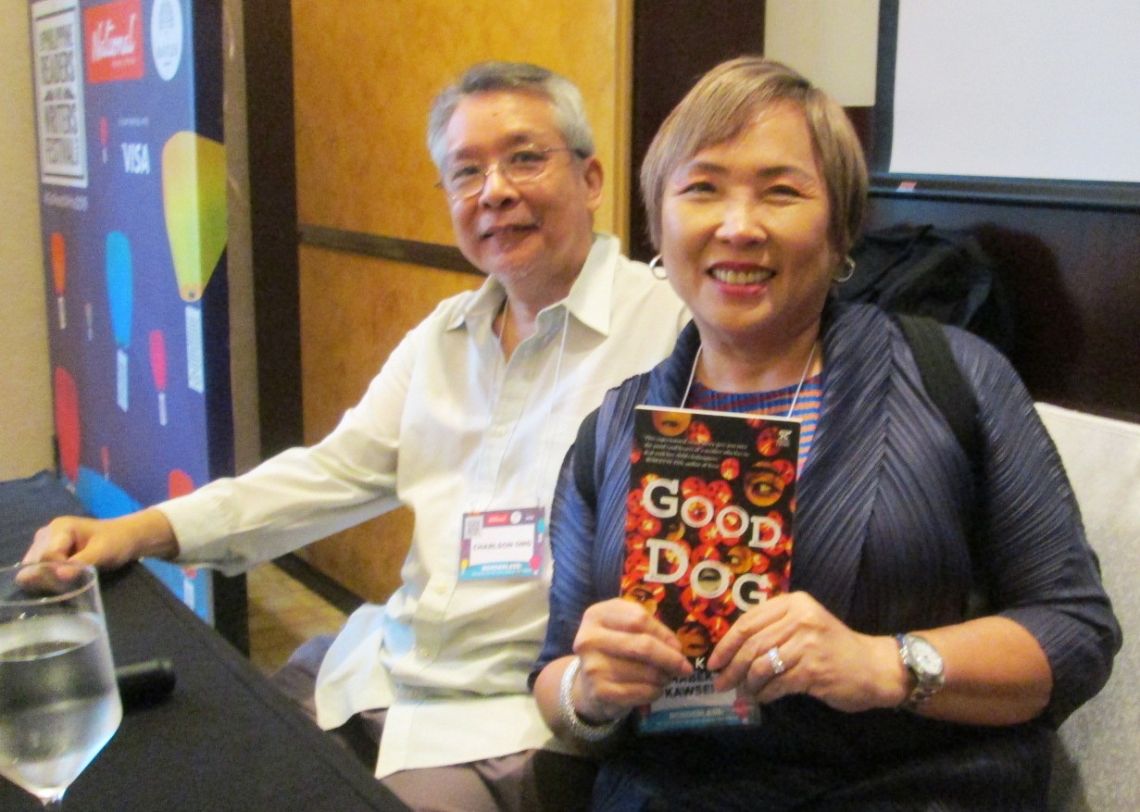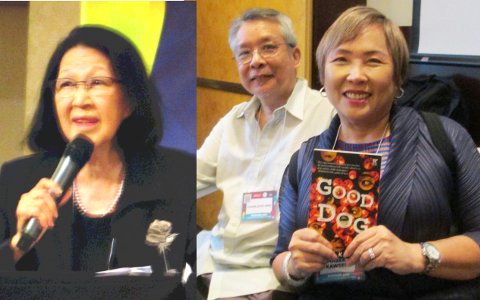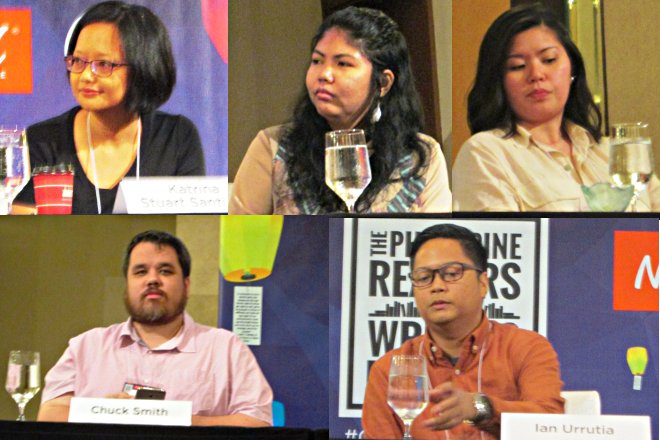The turnout at the recent three-day Philippine Readers and Writers
Festival at The Raffles Makati was all the evidence needed to show
that the written word is alive, well and living in this country. It
can be said that published authors are the new rock stars as their
readers, mostly youngsters, lined up to have copies of their books
signed and took selfies.
Last week’s torrential rains delayed the start of the panel
discussions but did not cancel them. At the first one on “Weaving
Words Into Worlds: The Self and Space in Literature,” multi-awarded
author Cristina Pantoja Hidalgo, director of the University of Santo
Tomas Center for Creative Writing and Literary Studies and author of
more than 40 fiction and non-fiction books, looked back on how her
books, mostly written when she spent an expatriate’s life for 15
years, developed.

Cristina Pantoja Hidalgo
She said she used “the perspective of a Filipina looking backward
at her home.” Her earlier stories, written during the pre-martial
law period, were in the realist mode in her attempt to be relevant to
the times.
When she lived abroad with her family, her stories took on the form
of tales or modern fairy tales. “I used the fairy tale mode (in the
collections Tales for a Rainy Night and Where Only the Moon Rages),
but I didn’t know if they were good or bad.” Not until Gilda
Cordero Fernando told her they were excellent and deserved
publication.
Hidalgo said, “The tales were based on things that happened to me
and my friends but in fairy tale form. I wanted to tell a story that
I couldn’t tell if I used the realist mode. I didn’t want to be
found out. I’m a coward—that’s why I write tales.”
In the panel on “Writing the Novel,” Hidalgo suggested a way to
develop an idea for a story to the packed room: “Find something
interesting or compelling—a person, an experience, a place.”
She stressed the importance of reading, saying, “If you don’t
know what’s out there, the odds are not in your favor.”
She wrote with the influences of Henry James, Edith Wharton, Virginia
Woolf, Kerima Polotan, Cordero Fernando at the back of her head.
Later on, when she wrote her creative non-fiction (primarily travel
books), she credited women memoirists like Isak Dinesen and Maxine
Hong Kingston as her influences.
When Hidalgo started work on her novel Recuerdo, she said, “I
didn’t have to invent much because of our colorful family history
on my mother’s side.” This history included a secular priest in
their ancestry, a man who was part of the Revolution, exiled in the
Marianas Islands and executed in Bagumbayan.
She considered writer’s block as “kaartehan. I don’t believe in
inspiration either. You have to go out there and research, find out
what you need. I make writing my priority even if it means I absent
myself from work, I don’t check my students’ papers or I don’t
cook.”
Charlson Ong, author of four collections of short fiction and three
novels, including An Embarrassment of Riches and Banyaga, considered
the writing of a novel as “a journey, a trek, a quest at the end of
the day.”

Charlson Ong and Mabek Kawsek
He said there are two ways to plot out a novel: to have a plan that
enables the writer to know where he or she is going and to have a
flexible outline. But he insisted on sticking to a plan “to give
you discipline, to avoid or stop you from going too far where you
want to go.”
His new novel, which had taken him 10 years to draft, opens with the
stampede of the masses watching Willie Revillame’s noontime TV
program “Wowowee.” When his mother died in February this year, he
decided to end a certain phase of his life that was slowing down the
writing.
He described his process as tending to allow the subconscious or his
dreams to serve as materials for his work. “Be prepared for the
long haul,” he advised. “If you don’t finish your novel in five
years, you won’t be able to although I broke my own rule when it
took me ten years to finish.”
Ong said the characters in a book are also “entwined with your
themes. They embody the discourses you are intending.” He quoted
National Artist Nick Joaquin who was once asked, “Who are you in
your book?” Joaquin answered, “No one and everyone!”
Ong said that to force oneself to write, “Invent your own Russian
winter.” He added, “Don’t get too close to people. Your best
friend or lover is your writing.”
Mabek Kawsek, whose debut crime novel Good Dog also tackles
Filipino-Chinese issues, came into being as a writer in 2006 during a
time when her generation of Fil-Chi women were still second-class
citizens in their households who never questioned the status quo and
tolerated abuse.
She said since China was closed after 1949, her grandparents were not
able to return there and, with her parents, assimilated with the
Filipinos. She suffered from a “cultural amnesia” about her
so-called country of origin. “I have no experience of China,” she
added. “I’ve watched Chinese movies with English subtitles. No
subtitles, no watching.”
She said her generation of writers owns a “hybrid voice” and have
“an infinite way of showing we have assimilated and gone beyond
assimilation.”#

